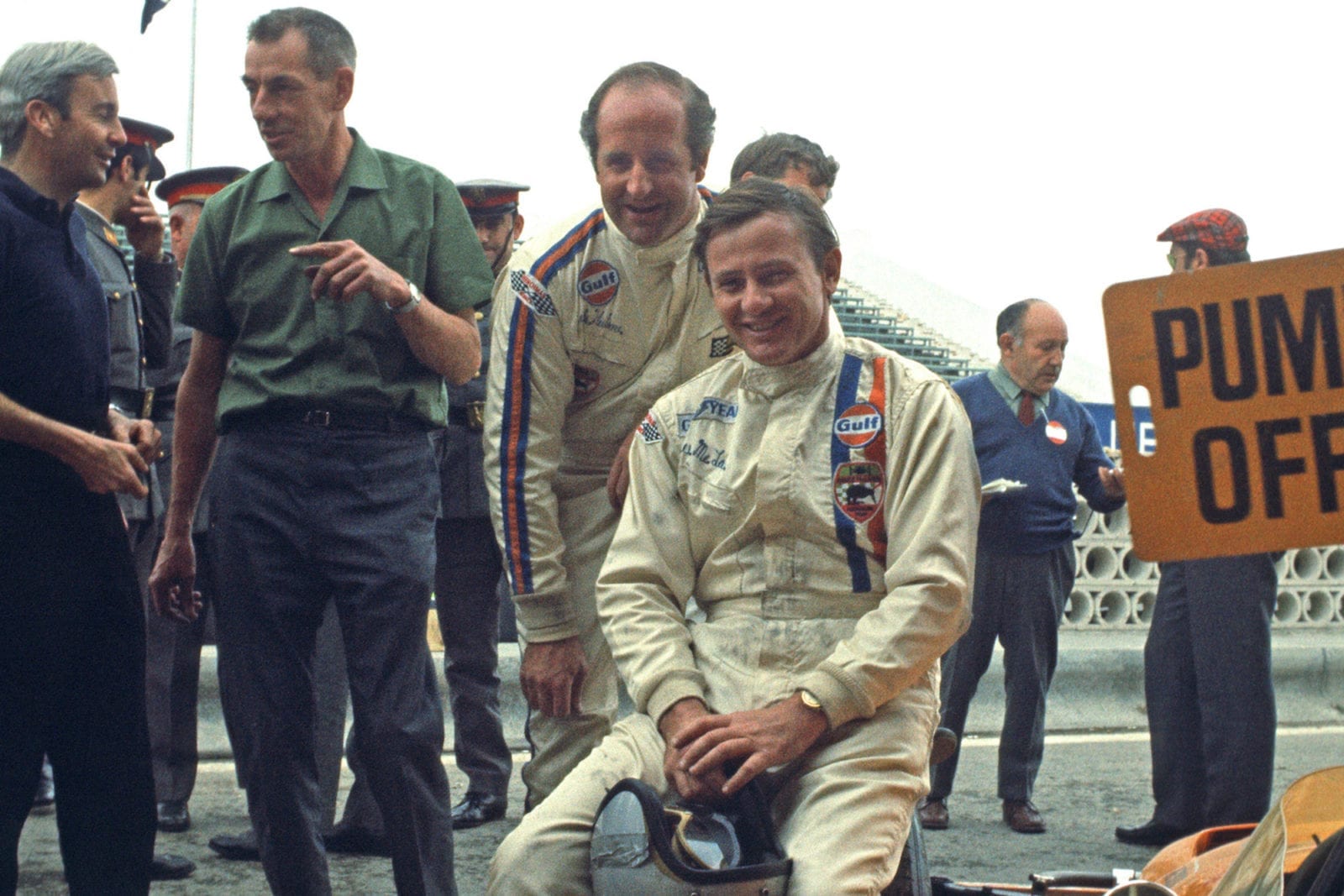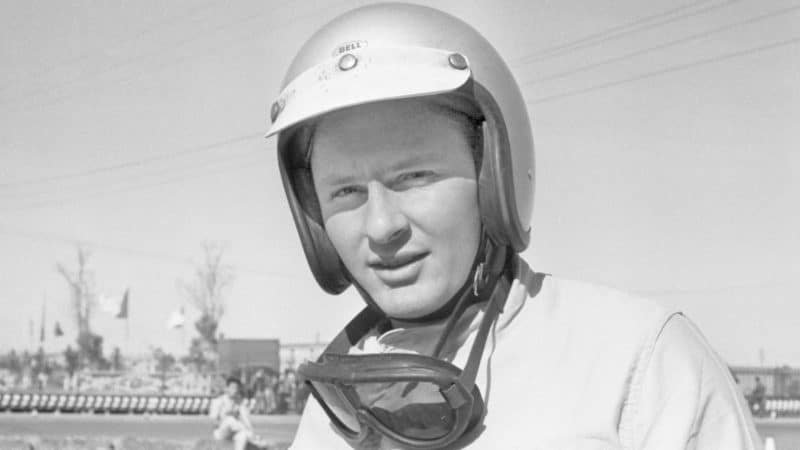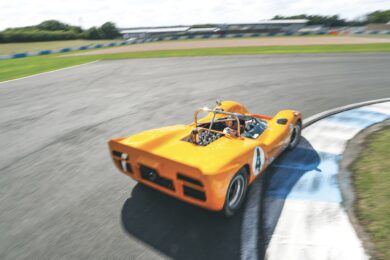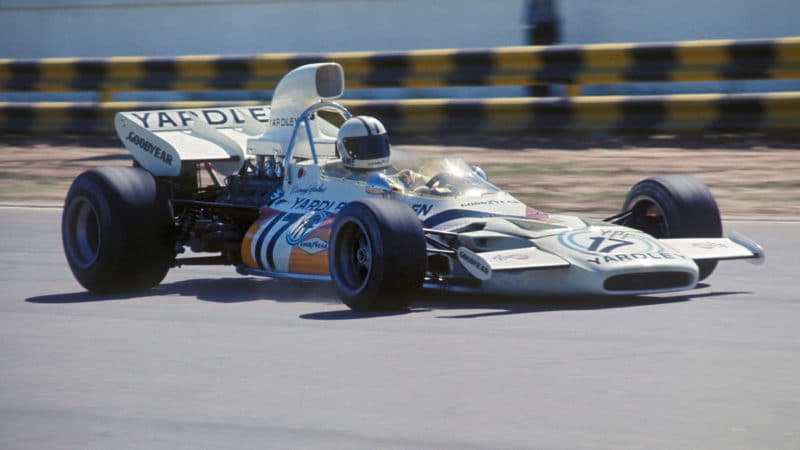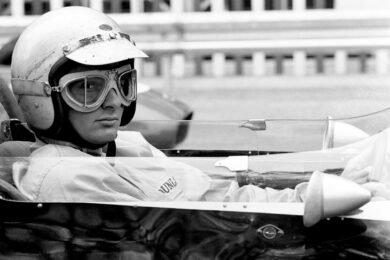When curmudgeonly Charlie Cooper queered Bruce’s plans for the 1964 Tasman series, his number one driver decided to do his own thing, with help from Teddy and his younger racing driver brother, Timmy. The Mayers brought money, Climax engines and Tyler Alexander, the handsome all-American boy-cum-aircraft engineer who, along with Wally Willmott, Bruce’s trusted spanner man, built two lightweight Coopers: one took Bruce to the title, the other took Timmy, who shimmered with promise, to an early death at Longford.
“I went home and thought hard about what to do,” says Teddy. “I eventually realised people were going to continue racing no matter what I decided, so I returned to the UK to try to make the sport safer.” And make McLaren successful.
He instilled discipline and drove the team and its suppliers hard — probably too hard, but for Bruce’s soothing manner — and matters moved on at a hectic pace, especially when you consider Bruce was still employed by Cooper and heavily involved with Ford’s scorched-earth Le Mans campaign.
“McLaren had the most talented people by some distance — and Bruce glued them together in his easygoing way,”
“If anything, after Bruce’s death, I think I got tougher,” says Mayer. “I had to in order to keep control, to make sure we were all pulling in the same direction.” Making this task appear effortless had probably been Bruce’s greatest strength.
Ganley: “He had such charisma that if he’d come in one morning and said we were going to stop racing and walk across the Sahara instead, we would have all said, `OK’.”
By the end of 1964 the team had moved to the Belvedere Works in Feltham, won ‘Big Banger’ Group 7 races in the UK and US (with the modded Zerex Special) and built the first McLaren: M1, a spaceframe sports-racer. More, it had struck a deal with Peter Agg’s Lambretta-Trojan group that allowed M1As (and subsequent models) to be built under licence at Elva’s factory in Rye. This programme, soon relocated to Croydon, had several benefits: as well as royalty payments and promotion, it allowed McLaren to concentrate on prototypes and forced it to engineer properly, ie blueprints, not fag packet doodles. Ex-Cooper tech men Owen Maddock and Eddie Stait helped on a freelance basis, but it soon became clear that the team needed a full-time chief designer.
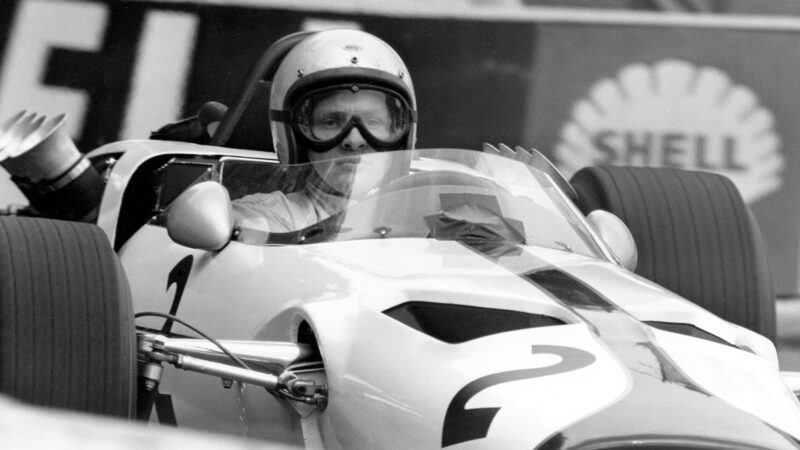
Bruce in Monaco 1966, the McLaren team’s debut grand prix
Grand Prix Photo
“My mate John Muller was Alan Rees’s F2 mechanic,” says Ganley. “He’d told me how Alan kept mentioning his clever friend who was involved with Concorde at Farnborough…”
Robin Herd, who had a brilliant double-first in engineering from Oxford, was working for the National Gas Turbine Establishment (NGTE) when Bruce called. That night he chatted informally over dinner with him and Teddy — and was formally offered the post. At 23, it was his first job in racing.
“McLaren had the most talented people I have ever come across, by some distance — and Bruce glued them together in his easygoing way,” says Herd. “Each man was capable of doing everything, and although there was a delineation of responsibilities, we all chipped in. It wasn’t design by committee — I took absolute responsibility — but it would have been stupid not to utilise their knowledge and experience.”
It speaks volumes that these hardened racers united behind a whizz-kid with zip experience, and that a shy postgrad could stand his technological corner. Hence Mallite. A sandwich laminate of sheet aluminium and end-grain balsa, it had been developed for aircraft floors, but Herd’s background meant he wasn’t in awe of innovative materials and practices, while his boss, his engineering eyes opened by Ford, proved receptive to new ideas: M2A would have a Mallite monocoque. This car was the team’s 1965 tyre-test hack — McLaren had signed a deal with Firestone prior to the inaugural season of 3-litre F1 (1966), Bruce’s first away from Cooper. More-glue-less-rivets M2B, the GP car proper, would impress in terms of build quality and stiffness. Sadly, its engines were dire. Both V8s — Ford’s linered-down Indy quad-cam and the Serenissima — were gutless, and Bruce did well to score three points.
Engine problems continued in 1967. A new BRM V12 was on order but late arriving, so Bruce gratefully contested three GPs in an Eagle after his stop-gap F2-based M4A burned to a crisp at Goodwood. When its motor was finally uncrated, however, M5A (aluminium monocoque) proved competitive: Bruce might have won first time out in Canada had not the oil catch tank boiled the battery on this alternator-less car. Ironically, though, the delayed debut had done them a favour.
Although Gp7 racing had fizzled in the UK, it was fizzing in North America. Can-Am brought big bucks to the tracks in 1966; McLaren, shaded by Lola and Chaparral, went winless. It could not afford to let it happen again. So, as M5A sat forlorn in the factory — in Colnbrook from 1965 — Herd, with help from former NGTE colleague Gordon Coppuck, set about a new Can-Am challenger. M6A, McLaren’s first monocoque sports-racer, went from paper to track in 11 weeks and clocked 2000 miles of testing before alighting Stateside. Its win on debut — Hulme at Elkhart Lake — sparked a five-season run of 39 wins from 43 starts. This, along with the Goodyear deal it signed in 1967, was the team’s pay dirt.
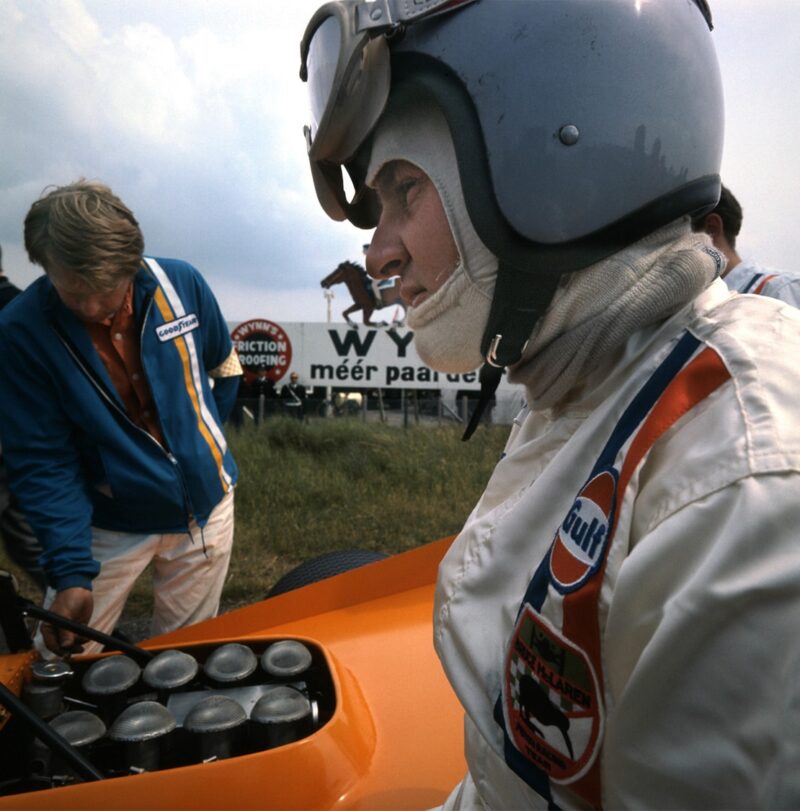
Bruce McLaren at Zandvoort, 1968
Grand Prix Photo
Everything was now in position to have a proper crack at F1 in 1968: off-the-peg DFVs, reigning champ Hulme (from Brabham) and M7A, another promising bonded monocoque. At which point Herd dropped his bombshell: he was leaving. “I knew where my weaknesses were and felt I was riding on the back of the quality that was at McLaren,” he explains. “Bruce offered me far more money than Cosworth, plus shares, but I was leaving to learn, not to earn more money.
“Looking back, though, I should have stayed. Bruce and Teddy were fantastic. Bruce related the engineering to the driving and vice versa — the vital link that allowed us to become successful quickly — but without Teddy’s work I think it might have all been a bit of a balls-up. He had a ‘bad cop’ reputation only because he was more prepared than Bruce to make the difficult decisions.”
M7A won first time out — a dominant show by Bruce in the Race of Champions — and scored wins that year at Silverstone (International Trophy, Denny), Spa (Bruce, the team’s first GP win), Monza and Mont Tremblant (both Denny), as the squad blended, filled and smoothed after Herd’s departure.
Bruce originally asked Coppuck to become chief designer. Whereas Robin had basically been plucked from university, Gordon, barring National Service, had been working diligently through the NGTE drawing office since 1952.
“I had a very secure, if very sober, job,” he says. “But after Robin called to ask if I was interested in joining McLaren, I took two weeks’ holiday and spent them at Feltham. I was impressed by the atmosphere — magnificently friendly, full of good humour — and the speed at which drawings became parts; I was used to waiting a year.” He was hooked.
Coppuck was undemonstrative, determined — and honest: he told Bruce that he didn’t yet feel ready to be chief designer. So Swiss-born Jo Marquart was recruited from Lotus, and although it soon dawned on Coppuck that his new colleague had no more experience than he, they got on well.
“In truth I don’t think either of us was confident enough to replace Robin; he was in a league of his own,” says Coppuck. “Our first project was M8A: Jo did the front, I did the back. It turned out OK.” It won five of 1968’s six Can-Am races.
Marquart’s F1 cars, however, were less successful: the four-wheel-drive M9A swallowed up a huge amount of the 1969 budget for zero return, and his reworking of the M7-series, 1970’s M14A, was steady rather than spectacular. Can-Am was still its banker, but the team’s European arm was looking shaky in the aftermath of Bruce’s death.
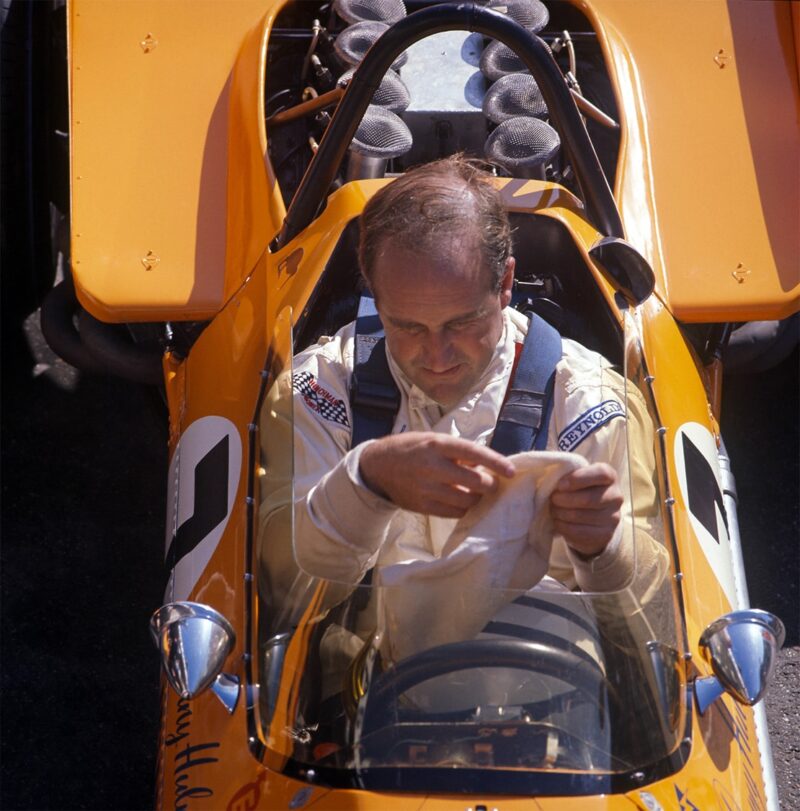
Denny Hulme at Zandvoort, 1968
Grand Prix Photo
Australian Ralph Bellamy was recruited to buttress the drawing office and he designed M19A after Marquart tipped him the wink about his imminent departure. Its use of rising-rate suspension made it difficult to sort, while its Coke-bottle shape restricted straight-line speed. The team won only one GP in 1971-72, while Bellamy, no fan of McLaren’s inclusive working practices, moved to Brabham after only a year.
It was time for Coppuck to run the show. His 1970 M15 Indycar, basically a single-seat Can-Am, had put the wind up the 500’s regulars. Its successor blew them away. M16, with its wings, wedge nose and hipster rads, was a Lotus 72 for ovals. Mark Donohue recorded Indy’s first 180mph lap — a 10mph increase! — in testing and was running away with the race when his gearbox broke. A more conservative approach the following year, however, saw his Penske-run M16B prevail.
“M16 changed my life,” says Coppuck. “I always felt Can-Am was an inherited success. In contrast, no one expected us to turn Indy on its head; it was this success that convinced me I could do it. It also proved we were still credible as a team.”
